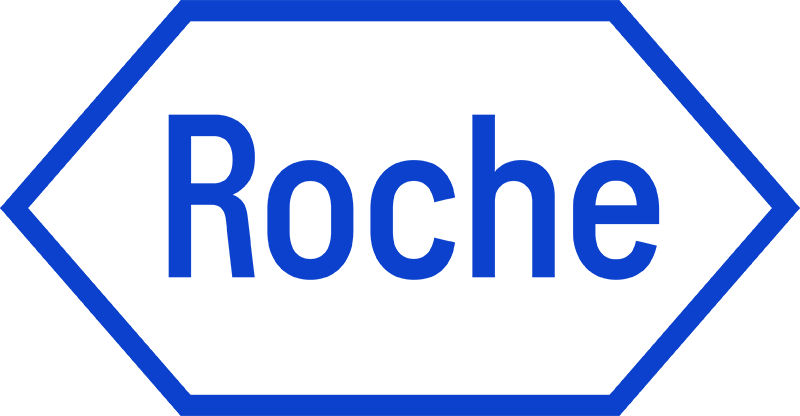Elecsys® HE4 - Human epididymal protein 4

A biomarker for the management of ovarian cancer patients
The Roche Elecsys® HE4 assay is a tumor marker test for use with blood samples to support monitoring and surveillance of ovarian cancer patients and together with Elecsys® CA 125 II and ROMA™ algorithm for the risk assessment of patients presenting with pelvic mass1.
Human epididymal protein 4 (HE4) is a biomarker that is highly elevated in epithelial ovarian cancer and has been shown to be involved in ovarian cancer cell proliferation and invasion2-4
HE4 has a higher sensitivity and specificity than CA 125 in the detection of ovarian cancer in patients presenting with pelvic mass5
In addition, HE4 can be used for monitoring disease and progression.6-8
A combined use of HE4 and CA 125 using ROMA (Risk of Ovarian Malignancy Algorithm) can increase the sensitivity and specificity for assessing the risk of ovarian cancer
Among women presenting with pelvic mass, the combined use of HE4 and CA 125 using ROMA (Risk of Ovarian Malignancy Algorithm) can increase the sensitivity and specificity of risk estimation of patients with pelvic mass - even stages I/II ovarian cancer – than CA 125 alone9-11
- ROMA accurately identifies 94% of the patients with pelvic mass as having ovarian cancer9
- ROMA has a higher specificity than CA 125 alone: Among ten women with ovarian cancer, ROMA identifies one more patient than CA 125 alone (sensitivity: ROMA 90% vs. CA 125 79%)10
- ROMA has a higher sensitivity than CA 125 alone: Among ten women with benign gynecologic diseases, ROMA dismisses one more patient which CA 125 alone would include as having ovarian cancer (Specificity: ROMA 93% vs. CA 125 86%)10
- ROMA has a higher sensitivity and specificity in detecting stages I/II ovarian cancer than CA 125 alone11
HE4 and CA 125 together improve ovarian cancer monitoring
- Either HE4 or CA 125 levels can be elevated in patients during therapy monitoring and recurrence monitoring6-8
- At disease progression, some patients show an elevated HE4 level earlier than an increase in CA 125 level, and others show an elevated CA 125 level earlier than an increase in HE4 level. Therefore, HE4 and CA 125 together can effectively monitor therapy response6-8
- As patients with elevated CA 125 level at diagnosis can switch to elevated HE4 level at follow up, and vice versa, testing for both HE4 and CA 125 can identify patients with recurrent disease that CA 125 alone would miss8
Efficiency and reliability for the laboratory1
- Shows precision across the entire measuring range for reliable results
- Has a stability of 12 weeks at 2-8˚C after opening (cobas e 411, cobas e 601, cobas e 602 systems)
- Has a stability of 16 weeks at 2-8˚C after opening (cobas e 402, cobas e 801 analytical units)
- Is fast with 18 minute assay time
- Is available for use in both serum and plasma

Risk of Ovarian Malignancy Algorithm (ROMA)
The algorithm uses CA 125 value, HE4 value and menopausal status as an aid in estimating the risk of epithelial ovarian cancer in premenopausal and postmenopausal women presenting with pelvic mass.1,10
ROMA™ calculates a predictive probability of finding epithelial ovarian cancer on surgery.1,10

| Pelvic mass evaluation: Risk of Ovarian Malignancy Algorithm (ROMA)10 | |||
| Pre-menopausal ▼ |
Post-menopausal ▼ |
||
| PI = - 12.0 + 2.38*LN[HE4] + 0.0626*LN[CA 125] | PI = -8.09 + 1.04*LN[HE4] + 0.732*LN[CA 125] | ||
| ▼ |
▼ |
||
| ROMA* index [%] = exp(PI) / [1 + exp(PI)] *100 | |||
| ▼ |
▼ |
||
| < 11.4% | ≥ 11.4 % |
< 29.9 % | ≥ 29.9 % |
| low risk | high risk | low risk | high risk |

*Human samples only
Note: Approved Intended Use of the assay may vary in different countries. For specific country approved use, please consult your local Package Insert
References
- Elecsys® HE4 Method Sheet for material #05950929190 V12 for cobas e 411, cobas e 601 & cobas e 602 #05950929214 V10 for cobas e 411, cobas e 601 & cobas e 602 #07027478190 V6 for cobas e 402 & cobas e 801 #07027478214 V6 for cobas e 402 & cobas e 801
- Moore RG, et al. HE4 (WFDC2) gene overexpression promotes ovarian tumor growth. Sci Rep. 2014;4:3574.
- Lu R, et al. Human epididymis protein 4 (HE4) plays a key role in ovarian cancer cell adhesion and motility. Biochem Biophys Res Commun. 2012;419:274-80.
- Zhu YF, et al. Effect of WFDC 2 silencing on the proliferation, motility and invasion of human serous ovarian cancer cells in vitro. Asian Pac J Trop Med. 2013;6:265-72.
- Moore RG, et al. The use of multiple novel tumor biomarkers for the detection of ovarian carcinoma in patients with a pelvic mass. Gynecol Oncol. 2008;108:402-8.
- Schummer M, et al. Evaluation of ovarian cancer remission markers HE4, MMP7 and Mesothelin by comparison to the established marker CA125. Gynecol Oncol. 2012;125:65-9.
- Allard J, et al. Use of a novel biomarker HE4 for monitoring patients with epithelial ovarian cancer. J Clin Oncol. 2008;26:15_suppl, 5535.
- Plotti F, et al. Does HE4 have a role as biomarker in the recurrence of ovarian cancer?. Tumor Biol. 2012;33:2117-2123.
- Moore RG, et al. Evaluation of the diagnostic accuracy of the risk of ovarian malignancy algorithm in women with a pelvic mass. Obstet Gynecol. 2011;118:280-288.
- Ortiz Muñoz B, et al. HE4, Ca125 and ROMA algorithm for differential diagnosis between benign gynaecological diseases and ovarian cancer. Tumour Biol. 2014;35:7249-58.
- Karlsen MA, et al. Evaluation of HE4, CA125, risk of ovarian malignancy algorithm (ROMA) and risk of malignancy index (RMI) as diagnostic tools of epithelial ovarian cancer in patients with a pelvic mass. Gynecol Oncol. 2012;127:379-83.

